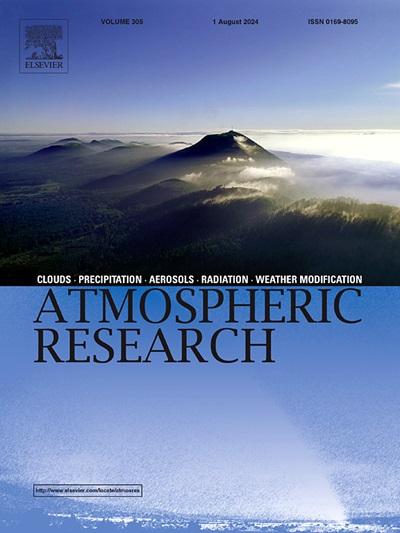Characteristics and plausible formation mechanisms of secondary inorganic and organic aerosols in four seasons and during haze episodes in Beijing
IF 4.5
2区 地球科学
Q1 METEOROLOGY & ATMOSPHERIC SCIENCES
引用次数: 0
Abstract
Secondary inorganic aerosols (SIA) and secondary organic aerosols (SOA) are major components of atmospheric particulate matter, however, their exact formation pathways are variable during haze evolution and need to be further clarified. To fully elucidate the characteristics of sulfate, nitrate and secondary organic carbon (SOC) and compare their roles in haze formation, PM2.5 samples were collected in downtown Beijing in four seasons, and PM1, PM2.5, and PM10 samples were collected over the severe haze episodes in winter and spring of 2017. The sulfur oxidation ratio (SOR), nitrogen oxidation ratio (NOR), and SOC/OC ratio were used to indicate the formation intensity of the respective secondary species. Based on the correlation analysis between secondary transformation ratios and their influencing factors, we found that relative humidity (RH) played a dominating role in NO3− formation and partitioning in the aerosol phase throughout the year, while SOR and SOC/OC were highly dependent on both O3 and RH. Different from the monotonic increase of SOR and NOR with RH, the SOC/OC ratio first increased and then decreased with increasing RH. The severe haze episode in winter was characterized by simultaneously enhanced secondary production of SO42−, NO3− and SOC. Whereas, the haze event in spring was featured by dramatically enhanced NO3− concentration, signifying the uniquely high contribution of nitrate to haze formation in spring.
求助全文
约1分钟内获得全文
求助全文
来源期刊

Atmospheric Research
地学-气象与大气科学
CiteScore
9.40
自引率
10.90%
发文量
460
审稿时长
47 days
期刊介绍:
The journal publishes scientific papers (research papers, review articles, letters and notes) dealing with the part of the atmosphere where meteorological events occur. Attention is given to all processes extending from the earth surface to the tropopause, but special emphasis continues to be devoted to the physics of clouds, mesoscale meteorology and air pollution, i.e. atmospheric aerosols; microphysical processes; cloud dynamics and thermodynamics; numerical simulation, climatology, climate change and weather modification.
 求助内容:
求助内容: 应助结果提醒方式:
应助结果提醒方式:


